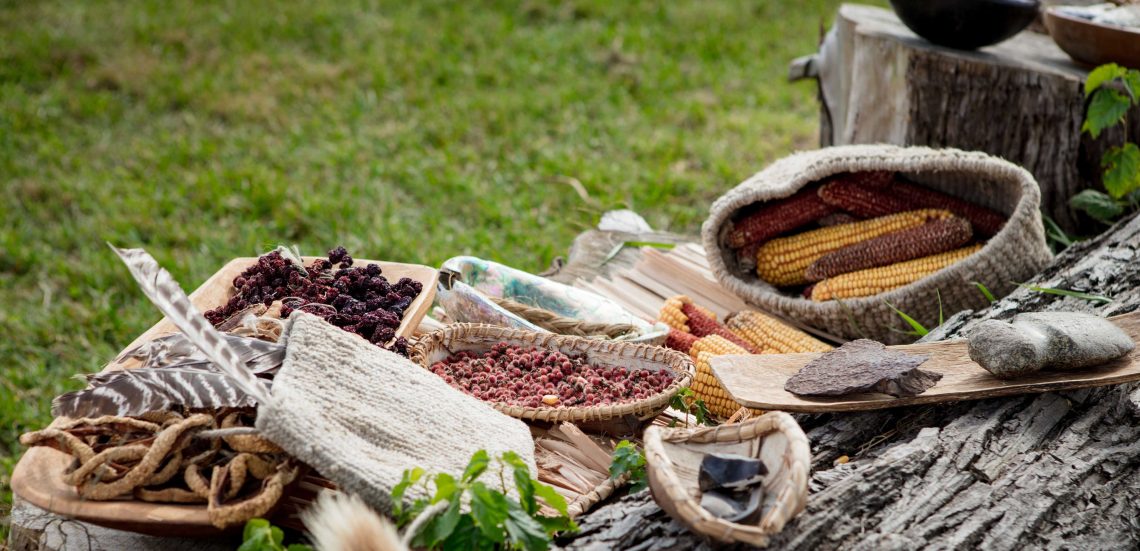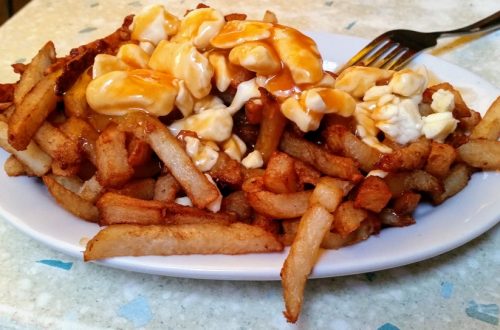
Emulating Indigenous People in Giving Thanks
We’re about to partake in Thanksgiving, an annual event that typically involves a traditional collection of relatives and people you know together with a turkey, a lot of food, and occasional overeating. For some, it’s not Thanksgiving without a communal football game on TV. Too often, these celebrations lack the spiritual element of giving thanks. Yet the indigenous people who lived here pre-1491 held harvest celebrations that honored every animal they took for food or clothing. They also thanked the Great Spirit for the crops they harvested and the wild fruits, nuts, and tubers they gathered. All across the continent, native Americans saw a natural balance among all forms of nature, and those forms required respect.
After elementary school, many of us hardly ever think about the indigenous people who had been celebrating harvests for eons before the band of religious refugees showed up at the Wampanoag village of Patuxet (now Plymouth, Mass.). Keep in mind that about half of the grown foods we eat were first cultivated by indigenous people of the Americas. There’s the “Magic Eight” — corn, beans, squash, chiles, tomatoes, potatoes, vanilla, and cacao. These are the critical crops that tribes gave to the world. Imagine Italy without tomatoes or Northern Europe without the potato.
Wide diversity among the 500 nations
Geography mattered to the indigenous cultures. Each had and continues to cultivate its own specialty foods, creating a wide diversity among the more than 500 first nations across the U.S. Even though longer-distance trade existed among the tribes, local geography influenced the food eaten. East and west coast tribes had seafood in addition to the crops they grew. Tribes of the plains subsisted largely on buffalo and wild plants along with corn, which they traded for, especially from prairie tribes. Southwest Indians largely consumed farmed food along with wild plants and local game. No matter where the tribe was located, native Americans considered every seed and crop to have a special purpose. Besides sustenance, food’s greatest responsibility was to bring people together. And the grandmothers knew what to cook to treat certain illnesses.
They held celebrations of thanks to show respect to their sources of sustenance. Celebration times varied from year to year, but most coincided with the harvest. Each month was marked by the full moon: March was Maple Sugar Moon; June was Strawberry Moon; August, Green Corn Moon; September, Harvest Moon; and October, Hunter’s Moon. In the Northeast and Great Lakes areas, harvest time usually began in August and lasted until October and November, just before the last killing frost. Besides the corn, squash, beans, and pumpkins they usually grew, these Eastern native Americans also harvested local wild fruits such as cranberries, blueberries, persimmons, pawpaw, walnuts, acorns, ground nuts (potato beans), and chestnuts.
In addition, the tribes were blessed with good hunting and fishing. The venison, fish, and other proteins would have been sun-dried or smoked and hung in the lodges. Other food stores were buried for preservation over the winter. But enough was usually set aside for an ample feast for the tribe and occasionally neighboring people.
Contemporary cuisine
In honor of Thanksgiving, I decided to explore dishes from native American recipes. Here are a few ideas for today from indigenous chefs using available ingredients, as well as this salad recipe created by young native Americans in Minnesota. This recipe, which incorporates the “three sisters” of corn, squash, and beans, would make a great Thanksgiving side dish. From the Great Lakes region, here’s a recipe using one of the main foods of the Ojibwe, wild rice. Finally, here’s an Algonquin wild nut soup.
But whatever we consume on Thanksgiving 2022, it would serve us well to stop and think about the sources of our repast. And to say “thanks.”
To comment, please click on “Read in Browser” or on the headline to view the blog on the website. You can log in and comment at the end of the blog to share your thoughts and start a discussion.
If you’d like to share the blog, click on the Facebook icon or one of the others. Thanks!





One Comment
Tracy May
I have been looking for fun recipes to use some of the several pounds of wild rice given to us by friends who harvested it by hand on local Ojibwe lands. The one you posted here looks great. Can’t go wrong with root veggies and cranberries. Yum!